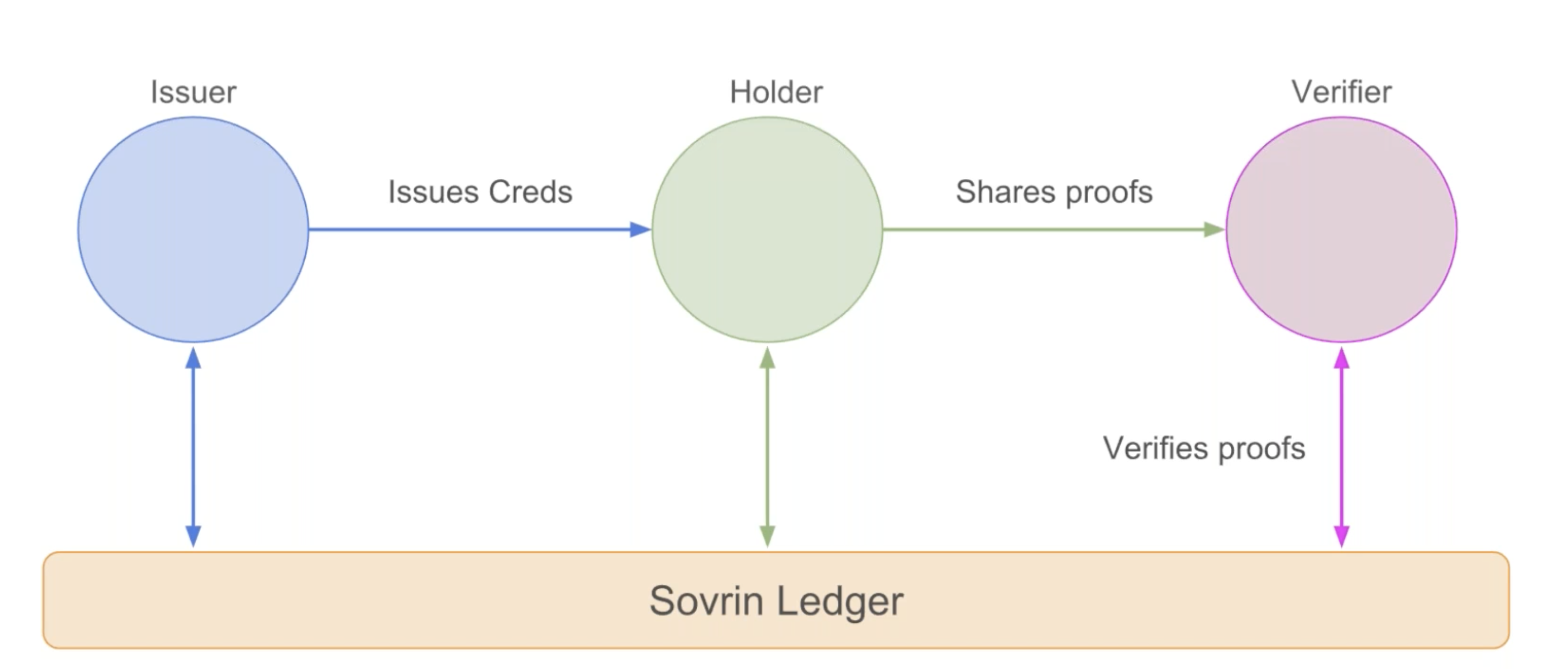Verifiable credentials can be issued by anyone, about anything, and can be presented to and verified by everyone
- Issuer: the entity that generates the credential
- Holder: entity that receives the credential
- Verifier: entity that wants to check the credentials of the Holder
For this to work requires a triangle of trust:
- The issuer trusts the holder
- The holder trusts the verifier
- The verifier trusts the issuer
Verifiable Data Registry (VDR): can be used to maintain identifiers and schemas
To make a VC:
- Issuer registers a DID and its associated verification key (verkey) to the VDR
- Issuer writes a credential definition (a template) to the VDR
- (Optional) Issuer offers a credential to the holder
- Holder requests a credential from the Issuer
- Issuer creates a credential based on the definition for the holder
- Issuer signs the credential with their private part of the verification key, and gives it to the holder (offer)
- Verifier can then check the credential against the issuer’s verkey

Example VC
{
"@context": [
"https://www.w3.org/2018/credentials/v1",
"https://www.w3.org/2018/credentials/examples/v1"
],
"id": "0892f680-6aeb-11eb-9bcf-f10d8993fde7",
"type": ["VerifiableCredential", "UniversityDegreeCredential"],
"issuer": {
"id": "did:example:76e12ec712ebc6f1c221ebfeb1f",
"name": "Acme University"
},
"issuanceDate": "2021-05-11T23:09:06.803Z",
"credentialSubject": {
"id": "did:example:ebfeb1f712ebc6f1c276e12ec21",
"degree": {
"type": "BachelorDegree",
"name": "Bachelor of Science"
}
},
"proof": {
"type": "Ed25519Signature2018",
"created": "2021-05-17T15:25:26Z",
"jws": "eyJhbGciOiJFZERTQYjY0Il19..nlcAA",
"proofPurpose": "assertionMethod",
"verificationMethod": "https://pathToIssuerPublicKey"
}
}